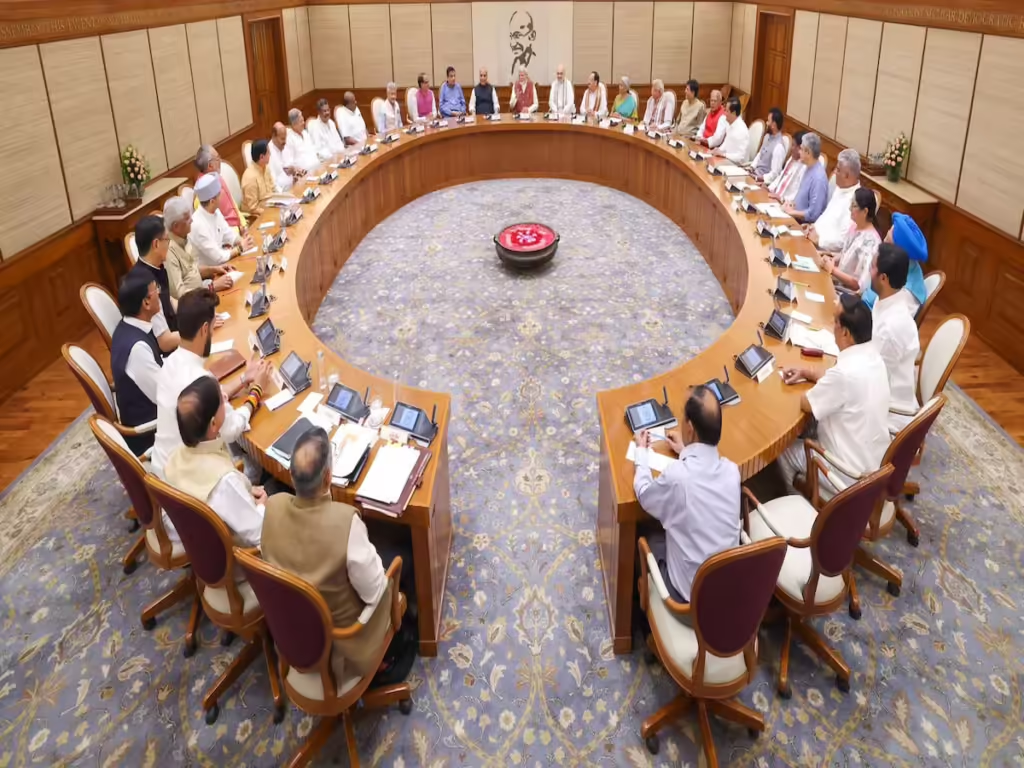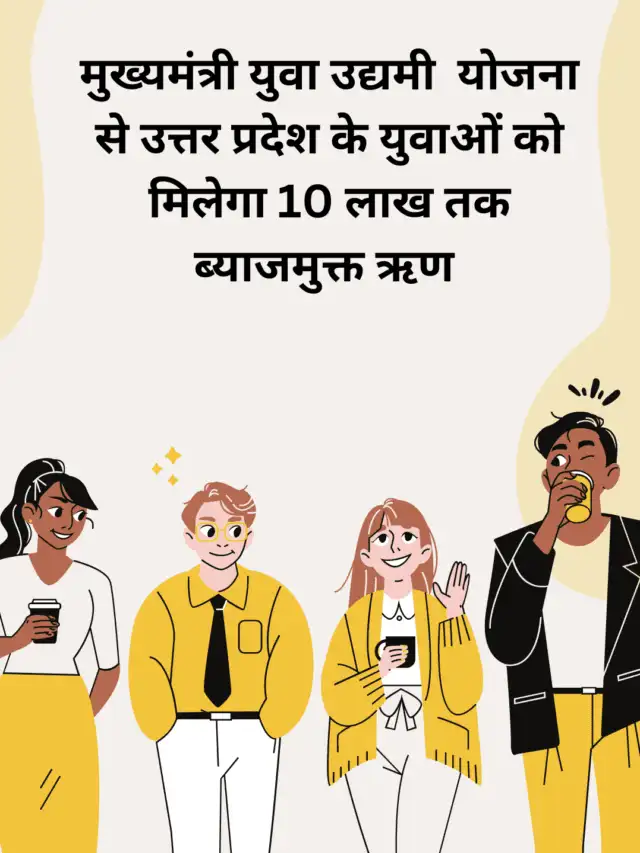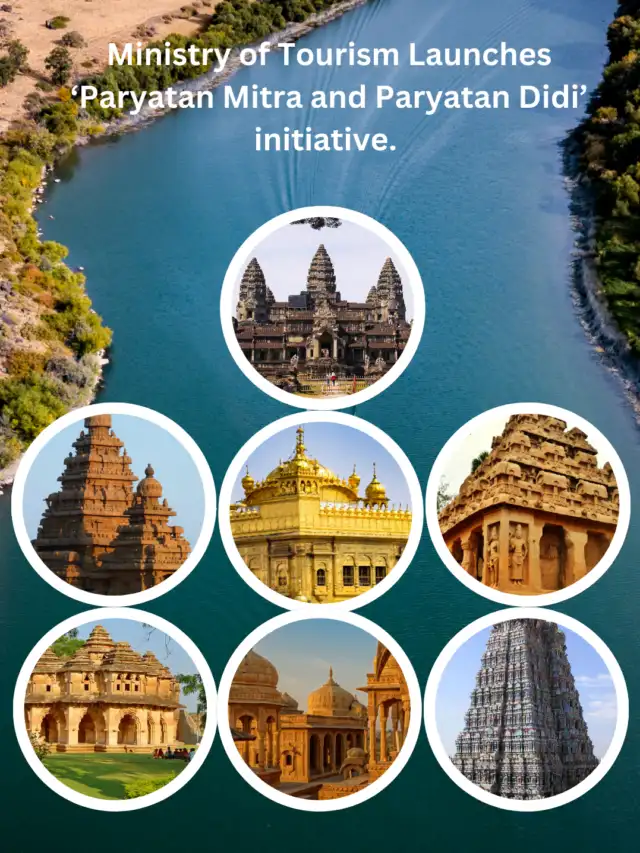
Cabinet approves recommendations of High-Level Committee on simultaneous elections
On September 18, 2024, the Union Cabinet, under the leadership of Prime Minister Shri Narendra Modi, accepted the recommendations of the High-Level Committee (HLC) on simultaneous elections. This committee, chaired by former President Shri Ram Nath Kovind, was formed to explore the feasibility and implementation mechanisms for conducting elections to the Lok Sabha, State Legislative Assemblies, and Local Bodies simultaneously across India.
Background and context
India’s electoral framework has evolved since independence, with simultaneous elections being the norm from 1951 to 1967. However, due to the premature dissolution of various State Legislative Assemblies, the system of holding national and state elections together was disrupted. Since then, India has witnessed multiple election cycles every year, leading to significant administrative, financial, and governance challenges.
The idea of simultaneous elections was revisited in several reports, including the 170th Report of the Law Commission (1999), the 79th Parliamentary Standing Committee Report (2015), and a working paper by NITI Aayog (2017). All these studies highlighted the benefits of holding elections simultaneously to ensure a more efficient and cost-effective process. The HLC, constituted through a Gazette notification on September 2, 2023, worked extensively for 191 days and submitted its report to the Cabinet(Hlc-report-en).
Key recommendations of the HLC
The HLC’s recommendations are centered on making simultaneous elections a reality, while addressing logistical, legal, and constitutional challenges. Here are the key takeaways:
1. Implementation in two phases
The report suggests implementing simultaneous elections in two phases:
- Phase 1: Lok Sabha and State Legislative Assembly elections will be conducted simultaneously.
- Phase 2: Local body elections (municipalities and panchayats) will follow within 100 days of the general elections.
This phased approach aims to ensure a smoother transition towards simultaneous elections by managing the logistical challenges of holding elections for all three tiers of government at once.
2. Common electoral roll for all elections
One of the significant reforms proposed is the use of a common electoral roll for all elections—Lok Sabha, State Assemblies, and local bodies. This will streamline the voter registration process, minimize discrepancies in voter lists, and reduce the administrative burden on both the Election Commission of India (ECI) and State Election Commissions.
The current system often leads to duplication of work, with different electoral rolls prepared for state and national elections, and sometimes even for local body elections. By establishing a single roll, administrative efficiency will increase, and voter participation is expected to improve.
3. Stakeholder consultation and public opinion
The HLC conducted extensive consultations with a broad range of stakeholders, including:
- Political Parties: The committee received responses from 47 political parties, with 32 parties supporting simultaneous elections.
- Election Experts: Former Chief Justices, Former Chief Election Commissioners, and State Election Commissioners were consulted.
- Public Feedback: Through its website and public notices, the HLC received over 21,558 responses, of which 80% were in favor of simultaneous elections(Hlc-report-en).
4. Legal and constitutional amendments
The report emphasizes the need for several constitutional amendments to enable simultaneous elections. The following changes are suggested:
- Amendment to Articles 83 and 172 of the Constitution, which pertain to the duration of the Lok Sabha and State Assemblies. These amendments will allow the synchronization of the terms of both Houses.
- Article 82A: A new provision that allows the President of India to notify a common date for elections to both the Lok Sabha and State Assemblies.
- Article 324A: This amendment will provide for the synchronization of local body elections with the general elections.
The amendments are necessary to ensure that even if an assembly is prematurely dissolved (due to a no-confidence motion, a hung assembly, or other reasons), fresh elections would be held, but the term of the new assembly would end along with the Lok Sabha.
Advantages of simultaneous elections
1. Cost reduction
One of the most significant benefits of simultaneous elections is the reduction in the overall cost of conducting elections. The logistical expenses of deploying personnel, security forces, and election materials can be drastically reduced by holding elections for all tiers of government together. Currently, the cost of elections runs into thousands of crores, and this can be cut by a significant margin.
2. Minimizing disruptions and policy paralysis
Frequent elections lead to repeated imposition of the Model Code of Conduct (MCC), which restricts the government’s ability to announce new schemes and take critical decisions. By consolidating elections into a single cycle, the MCC would be in place for a shorter duration, allowing the government to function without prolonged interruptions. This would ensure smoother governance and uninterrupted economic growth(Hlc-report-en)(Hlc-report-en).
3. Voter fatigue and participation
Multiple elections lead to voter fatigue, where citizens may become disinterested in participating due to the sheer frequency of voting. Simultaneous elections will reduce voter fatigue by requiring them to vote less frequently, potentially leading to higher voter turnout and increased engagement in the democratic process.
4. Strengthening governance
Simultaneous elections will ensure stability in governance, as governments at both the national and state levels would be elected for a fixed term of five years. This would avoid situations where state governments are in election mode while the central government continues its term, leading to better policy alignment and execution across the country.
5. Economic and social benefits
Simultaneous elections would also bring economic benefits by reducing disruptions to businesses and industries. Elections often lead to the temporary migration of workers, particularly in industries where labor is essential. By holding elections simultaneously, the loss of productivity can be minimized. Additionally, with fewer electoral disruptions, there will be less strain on public services such as law enforcement and transportation(Hlc-report-en).
Challenges and the way forward
While the advantages of simultaneous elections are substantial, there are challenges in implementing such a large-scale reform. These include:
- Synchronizing Election Terms: The biggest challenge is to align the terms of both Lok Sabha and State Assemblies, as their terms may not currently coincide.
- Constitutional and Legal Amendments: Several amendments to the Constitution and election-related laws are necessary to ensure that simultaneous elections can be conducted without infringing on democratic principles.
- Logistical Preparation: Conducting elections across such a vast and diverse country like India requires meticulous planning, coordination between the ECI and State Election Commissions, and the availability of adequate voting equipment such as EVMs and VVPATs.
The Cabinet has taken the first step by approving the HLC’s recommendations. Going forward, the government will form an implementation group to conduct discussions across the country and devise a detailed plan for rolling out simultaneous elections.
Conclusion
The acceptance of the High-Level Committee’s recommendations marks a major milestone in India’s electoral history. The proposed shift to simultaneous elections could transform India’s electoral process, making it more efficient, cost-effective, and conducive to good governance. The road ahead involves constitutional amendments, logistical planning, and extensive stakeholder consultation, but if successful, simultaneous elections will enhance India’s democratic structure and lead to more stable governance.
For further details, the full report is available on the One Nation, One Election portal at onoe.gov.in.
कैबिनेट ने एकसाथ चुनावों पर उच्च स्तरीय समिति की सिफारिशों को मंजूरी दी
18 सितंबर 2024 को प्रधानमंत्री श्री नरेंद्र मोदी की अध्यक्षता में केंद्रीय मंत्रिमंडल ने एकसाथ चुनावों पर उच्च स्तरीय समिति (HLC) की सिफारिशों को मंजूरी दे दी। यह समिति, जिसका नेतृत्व पूर्व राष्ट्रपति श्री राम नाथ कोविंद कर रहे थे, को भारत में लोकसभा, विधानसभा, और स्थानीय निकाय चुनावों को एक साथ कराने की संभावना और इसके लिए लागू करने के तरीकों का अध्ययन करने के लिए गठित किया गया था।
पृष्ठभूमि और संदर्भ
भारत के चुनावी ढांचे में स्वतंत्रता के बाद से कई बदलाव आए हैं। 1951 से 1967 तक एकसाथ चुनावों की परंपरा रही, लेकिन बाद में विभिन्न विधानसभाओं के पूर्व समय में भंग होने से यह प्रणाली बाधित हो गई। इसके बाद से भारत में हर साल कई चुनाव होते हैं, जिससे प्रशासन, वित्त और शासन में महत्वपूर्ण चुनौतियां उत्पन्न होती हैं।
170वीं विधि आयोग रिपोर्ट (1999), 79वीं संसदीय स्थायी समिति रिपोर्ट (2015), और नीति आयोग (2017) द्वारा जारी वर्किंग पेपर में भी एकसाथ चुनावों के फायदों का जिक्र किया गया था। इन रिपोर्टों में यह सुझाव दिया गया था कि एकसाथ चुनाव कराने से चुनाव प्रक्रिया को अधिक कुशल और सस्ता बनाया जा सकता है। सरकार ने इस पर विचार करने के लिए 2 सितंबर 2023 को HLC का गठन किया था, जिसने 191 दिनों तक काम किया और अपनी रिपोर्ट कैबिनेट को सौंपी【5†source】।
HLC की प्रमुख सिफारिशें
उच्च स्तरीय समिति ने एकसाथ चुनावों को वास्तविकता में बदलने के लिए कई सिफारिशें दी हैं। इन सिफारिशों में कानूनी, संवैधानिक और तार्किक चुनौतियों से निपटने के उपाय शामिल हैं। प्रमुख बिंदु इस प्रकार हैं:
1. दो चरणों में कार्यान्वयन
समिति ने एकसाथ चुनावों को दो चरणों में लागू करने का सुझाव दिया:
- पहला चरण: लोकसभा और राज्य विधानसभाओं के चुनाव एक साथ कराए जाएंगे।
- दूसरा चरण: स्थानीय निकाय चुनाव (नगरपालिकाएं और पंचायतें) 100 दिनों के भीतर कराए जाएंगे।
यह चरणबद्ध दृष्टिकोण एक साथ चुनावों की ओर संक्रमण को सुचारू रूप से लागू करने के लिए उठाया गया है, जिससे सभी तीन स्तरों के चुनाव एक साथ कराने की तार्किक चुनौतियों का प्रबंधन हो सके।
2. सभी चुनावों के लिए एक सामान्य मतदाता सूची
HLC ने सभी चुनावों—लोकसभा, राज्य विधानसभा और स्थानीय निकायों के लिए सामान्य मतदाता सूची का उपयोग करने का सुझाव दिया है। इससे मतदाता पंजीकरण प्रक्रिया सरल होगी, मतदाता सूचियों में विसंगतियों को कम किया जा सकेगा और चुनाव आयोग (ECI) और राज्य चुनाव आयोगों पर प्रशासनिक बोझ कम होगा।
वर्तमान में अलग-अलग चुनावों के लिए अलग-अलग मतदाता सूचियां तैयार की जाती हैं, जिससे कई बार सूची में गड़बड़ी होती है। एक सामान्य मतदाता सूची होने से प्रशासनिक दक्षता बढ़ेगी और मतदाता भागीदारी में सुधार की उम्मीद है।
3. हितधारकों से परामर्श और जनमत
समिति ने कई हितधारकों से परामर्श किया, जिनमें शामिल हैं:
- राजनीतिक दल: समिति को 47 राजनीतिक दलों से प्रतिक्रियाएं प्राप्त हुईं, जिनमें से 32 दलों ने एकसाथ चुनावों का समर्थन किया।
- चुनावी विशेषज्ञ: पूर्व मुख्य न्यायाधीशों, पूर्व मुख्य चुनाव आयुक्तों और राज्य चुनाव आयुक्तों से परामर्श लिया गया।
- जनता की राय: HLC ने अपनी वेबसाइट और सार्वजनिक नोटिस के माध्यम से 21,558 प्रतिक्रियाएं प्राप्त कीं, जिनमें से 80% लोगों ने एकसाथ चुनावों का समर्थन किया【5†source】।
4. संवैधानिक और कानूनी संशोधन
समिति ने एकसाथ चुनावों को लागू करने के लिए कुछ संवैधानिक संशोधनों की आवश्यकता बताई है। इनमें प्रमुख संशोधन निम्नलिखित हैं:
- अनुच्छेद 83 और 172 में संशोधन, जो लोकसभा और विधानसभा के कार्यकाल से संबंधित हैं। इन संशोधनों से दोनों सदनों के कार्यकाल को एक साथ लाने में मदद मिलेगी।
- अनुच्छेद 82A: एक नया प्रावधान, जिसके तहत भारत के राष्ट्रपति लोकसभा और विधानसभा के चुनावों के लिए एक सामान्य तिथि अधिसूचित कर सकते हैं।
- अनुच्छेद 324A: यह संशोधन स्थानीय निकाय चुनावों को लोकसभा और विधानसभा चुनावों के साथ समन्वित करने के प्रावधान के लिए होगा।
यह संशोधन यह सुनिश्चित करने के लिए आवश्यक हैं कि यदि कोई विधानसभा पूर्व में भंग हो जाती है (अविश्वास प्रस्ताव, त्रिशंकु विधानसभा या अन्य कारणों से), तो नए चुनाव कराए जाएंगे, लेकिन नई विधानसभा का कार्यकाल लोकसभा के साथ समाप्त होगा।
एकसाथ चुनावों के लाभ
1. खर्च में कमी
एकसाथ चुनावों का सबसे बड़ा लाभ यह है कि इससे चुनाव संचालन की लागत में भारी कमी आएगी। चुनाव कराने में लगने वाले कर्मियों, सुरक्षा बलों और चुनाव सामग्री की लागत को एकसाथ चुनावों से काफी हद तक कम किया जा सकेगा। वर्तमान में चुनावों की लागत हजारों करोड़ों में जाती है, जिसे इस नई प्रणाली से कम किया जा सकता है।
2. व्यवधान और नीति-निर्धारण पर असर कम होगा
बार-बार चुनावों के कारण बार-बार आदर्श आचार संहिता (MCC) लागू होती है, जिससे सरकार की विकास योजनाओं और महत्वपूर्ण निर्णयों पर रोक लग जाती है। एकसाथ चुनाव होने से MCC कम समय के लिए लागू रहेगी, जिससे सरकार को बिना किसी लंबे अवरोध के कार्य करने का अवसर मिलेगा। इससे नीति निर्धारण और आर्थिक विकास में भी तेजी आएगी【5†source】।
3. मतदाता थकान और भागीदारी
लगातार चुनावों के कारण मतदाता थकान का शिकार हो जाते हैं, जिससे उनकी भागीदारी कम हो जाती है। एकसाथ चुनाव होने से मतदाता थकान कम होगी, जिससे मतदाता सक्रिय रूप से चुनाव में हिस्सा लेंगे और लोकतांत्रिक प्रक्रिया मजबूत होगी।
4. शासन को मजबूत बनाना
एकसाथ चुनावों से शासन में स्थिरता आएगी, क्योंकि राष्ट्रीय और राज्य सरकारें पांच साल के निश्चित कार्यकाल के लिए चुनी जाएंगी। इससे स्थिति ऐसी नहीं बनेगी, जहां राज्य सरकारें चुनावी मोड में होती हैं और केंद्र सरकार अपना कार्यकाल जारी रखती है। इससे नीति निर्माण और कार्यान्वयन में बेहतर समन्वय होगा।
5. आर्थिक और सामाजिक लाभ
एकसाथ चुनावों से आर्थिक रूप से भी लाभ होगा, क्योंकि व्यवसायों और उद्योगों में होने वाले व्यवधानों को कम किया जा सकेगा। चुनावों के दौरान श्रमिकों, विशेषकर प्रवासी श्रमिकों, का अस्थायी पलायन होता है, जिससे उत्पादकता में गिरावट आती है। एकसाथ चुनावों से इस समस्या का समाधान हो सकेगा। साथ ही, कम चुनावी व्यवधानों के कारण सार्वजनिक सेवाओं जैसे कानून व्यवस्था और परिवहन पर भी कम दबाव पड़ेगा【5†source】।
चुनौतियाँ और आगे की राह
हालांकि एकसाथ चुनावों के लाभ पर्याप्त हैं, लेकिन इसे लागू करने में कई चुनौतियाँ भी हैं। इनमें प्रमुख चुनौतियाँ हैं:
- चुनावी कार्यकाल का समन्वय: सबसे बड़ी चुनौती यह है कि लोकसभा और राज्य विधानसभाओं के कार्यकाल को एक साथ कैसे लाया जाए, क्योंकि वर्तमान में उनके कार्यकाल अलग-अलग हैं।
- संवैधानिक और कानूनी संशोधन: यह सुनिश्चित करने के लिए कई संवैधानिक और चुनाव से संबंधित कानूनों में संशोधन की आवश्यकता होगी कि एकसाथ चुनावों का आयोजन लोकतांत्रिक सिद्धांतों का उल्लंघन किए बिना हो सके।
- लॉजिस्टिक तैयारी: इतने बड़े और विविध देश में चुनाव कराना एक चुनौतीपूर्ण कार्य है, जिसके लिए चुनाव आयोग और राज्य चुनाव आयोगों के बीच समन्वय, पर्याप्त मतदान उपकरणों जैसे EVMs और VVPATs की उपलब्धता की आवश्यकता होगी।
कैबिनेट ने समिति की सिफारिशों को स्वीकार कर पहला कदम उठा लिया है। अब आगे की राह में एक क्रियान्वयन समूह का गठन किया जाएगा, जो देशभर में विस्तृत चर्चा करेगा और एकसाथ चुनावों के क्रियान्वयन की योजना तैयार करेगा।
निष्कर्ष
उच्च स्तरीय समिति की सिफारिशों को मंजूरी भारत के चुनावी इतिहास में एक महत्वपूर्ण कदम है। प्रस्तावित बदलाव से भारत की चुनावी प्रक्रिया को अधिक कुशल, सस्ती और सुशासन के लिए अनुकूल बनाया जा सकेगा। इसके सफल कार्यान्वयन के लिए संवैधानिक संशोधन, तार्किक योजना और व्यापक हितधारक परामर्श की आवश्यकता होगी। यदि सफलतापूर्वक लागू हो जाता है, तो एकसाथ चुनाव भारत के लोकतांत्रिक ढांचे को और अधिक सुदृढ़ करेंगे और शासन को अधिक स्थिर बनाएंगे।
विस्तृत जानकारी के लिए, HLC की पूरी रिपोर्ट One Nation, One Election पोर्टल पर उपलब्ध है: onoe.gov.in।









